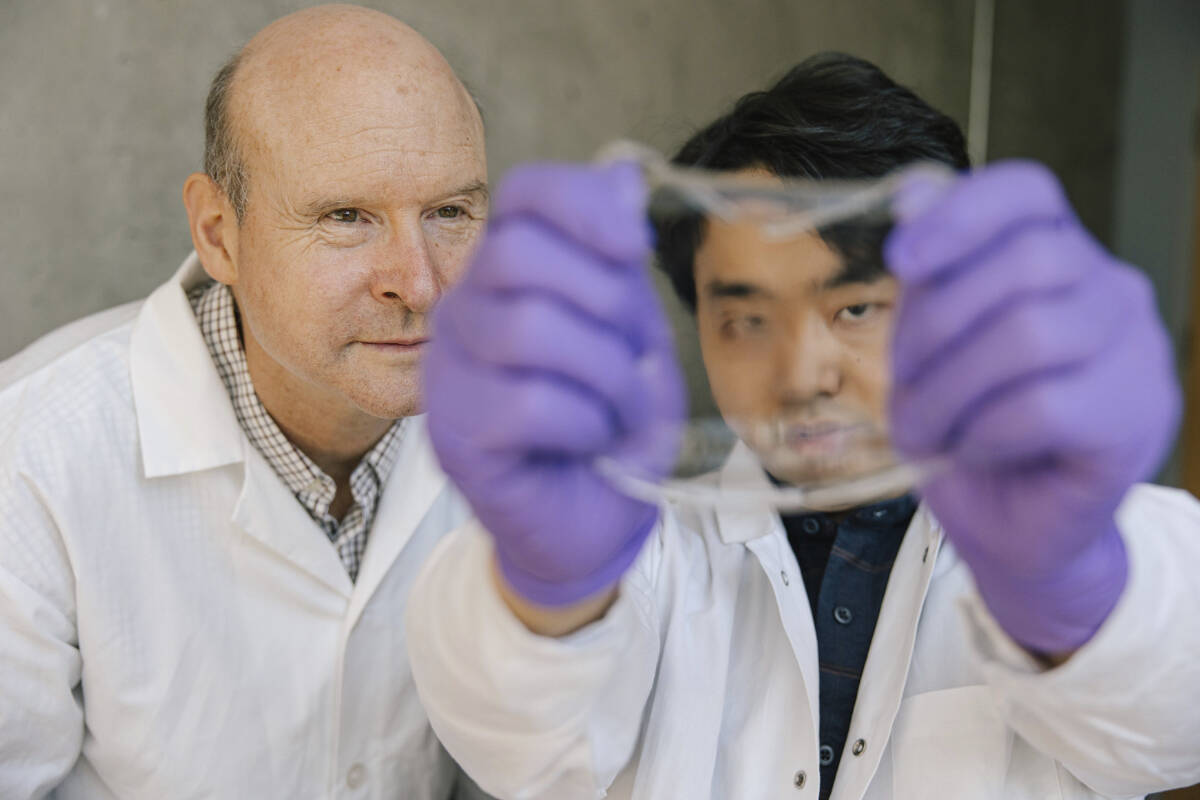Skin and gelatin have a lot more in common than you might think.
Researchers from UBC have found that gelatin — and other hydrogels — use ions to carry an electrical charge that generates a voltage when touched. In a new paper published in the journal Science, the researchers explain the science behind the phenomenon and its potential uses.
The work was started by Yuta Dobashi, a master’s student in biomedical engineering at UBC and the lead author of the study. Dobashi found a way to develop an “ionic skin” that can conduct electrical currents and stimulate nerve responses similar to human skin.
John Madden, an electrical and computer engineering professor in UBC’s faculty of applied science, explained that electric currents are generated by the movement of ions within the gels. The hydrogels contained salts, as well as larger negative ions and smaller positive ions. As the ions move in and out of the material, they expand and contract — the uneven distribution of the ions creates an electrical field which makes hydrogel sensors work.
The process is similar to how human skin detects touch sensations and the voltage is at a similar level to that of the human nervous system.
“We’re used to dealing with much higher voltages,” Madden said. “The problem is when we try to integrate those voltages, plus hard materials with our soft nervous tissue, it’s really hard to get the two to interface well. The beauty of these gels is they’re the same mechanical properties and they generate currents that are in the right range.”
Madden explained that ionic skins can be fitted over prosthetic limbs that will be able to sense objects through touch or pressure and relay that information to the nervous system allowing the brain to activate the motors required to lift or hold the object.
Another potential use for the gels is as implants. Ionic gels can be used as part of artificial knee cartilage or other parts of the body to stimulate nerve responses.
The market for smart skin technologies was estimated to be worth $4.5 billion in 2019 and it continues to grow.
If you want to see the science in action at home, take a bowl of gelatin and place an electrical tester in the bowl. Then simply press down on the gelatin to generate a charge.
READ MORE: Jumbo flying squid landing on menus as climate shifts seafood supply: UBC study
READ MORE: UBC study focuses on reducing the fear of being too happy
@SchislerCole
cole.schisler@bpdigital.ca
Like us on Facebook and follow us on Twitter.

